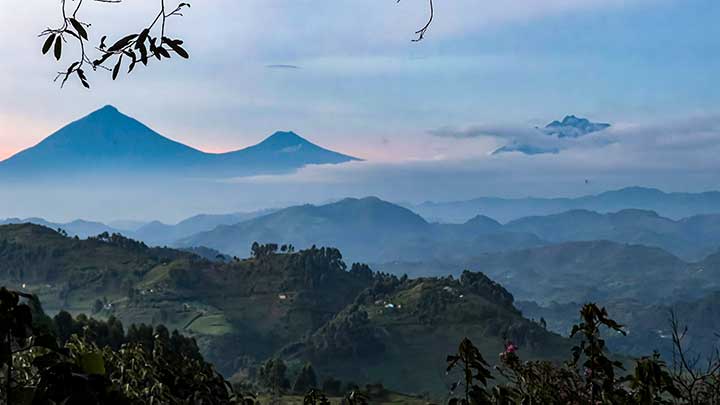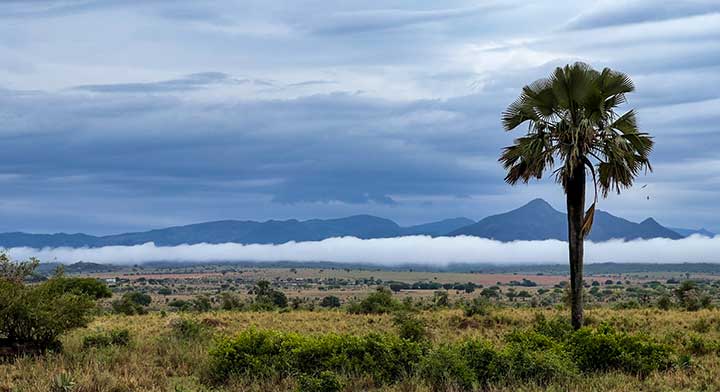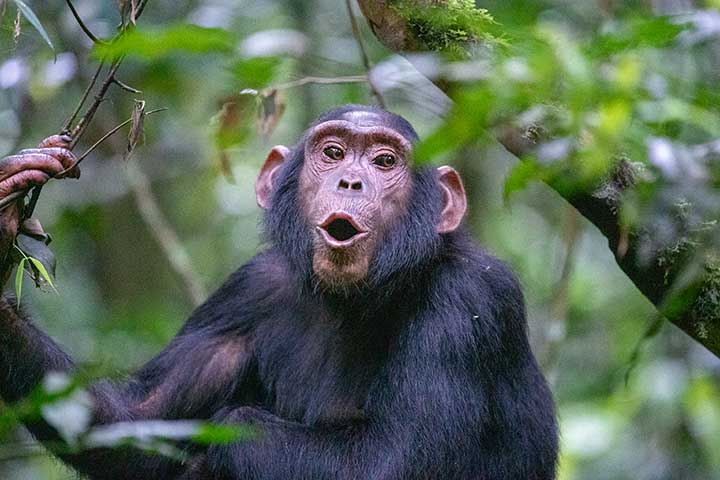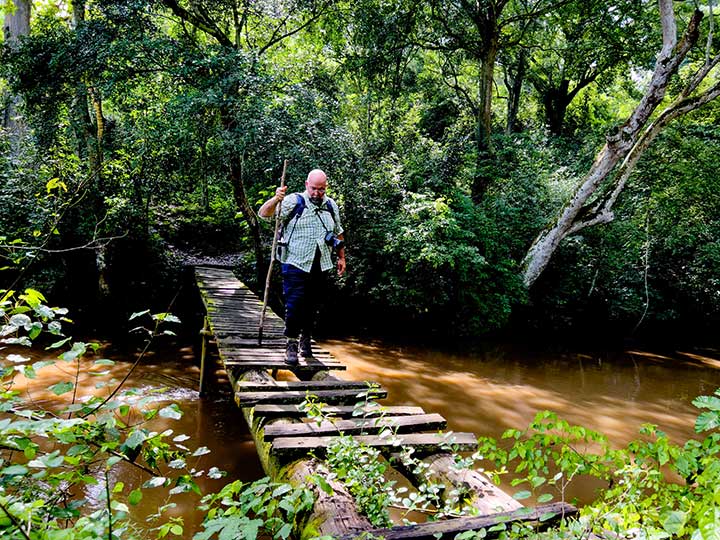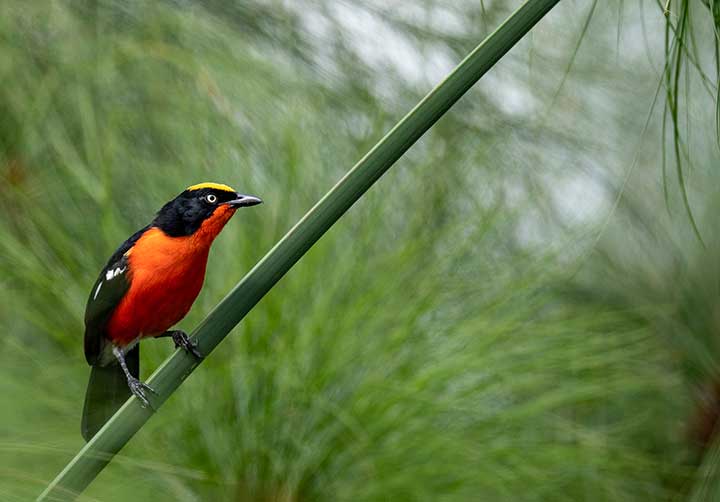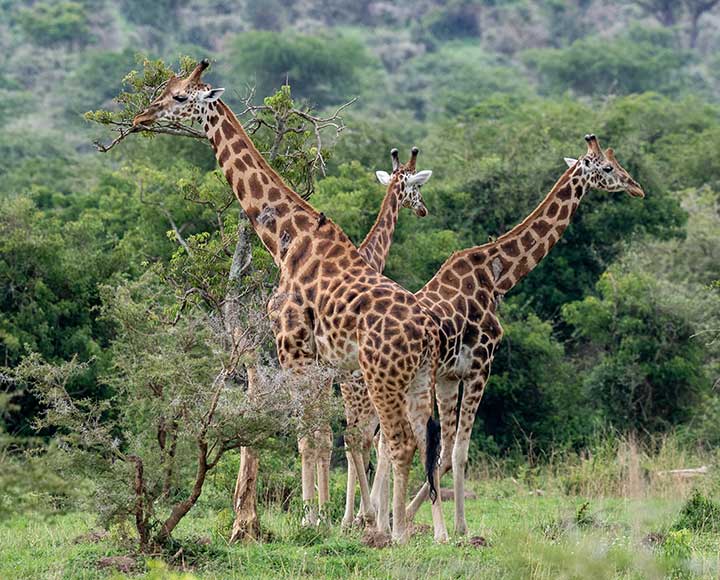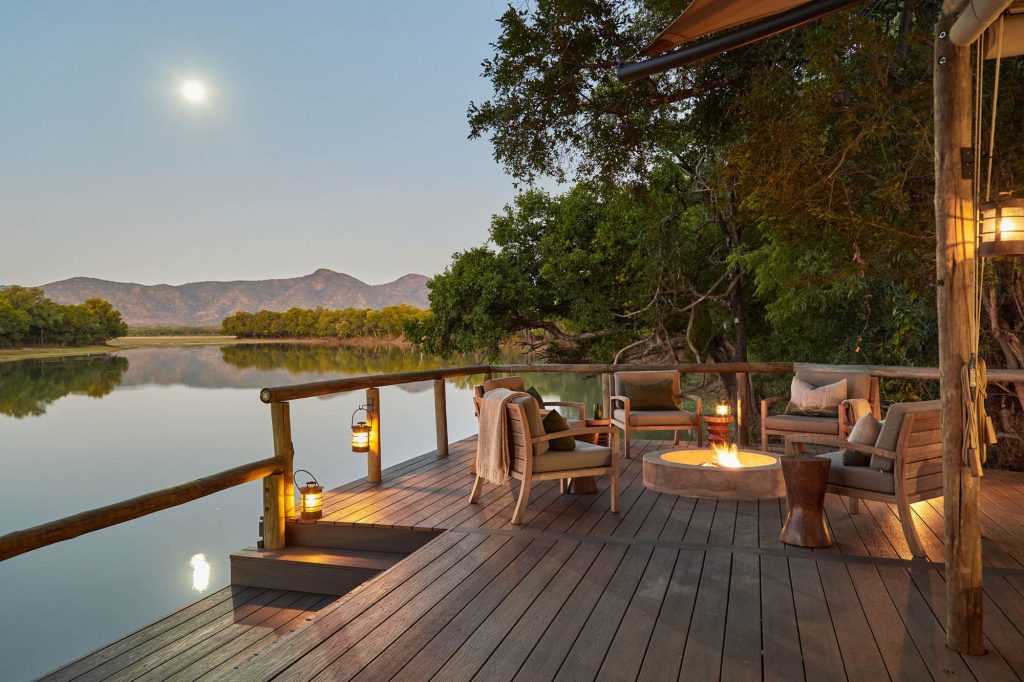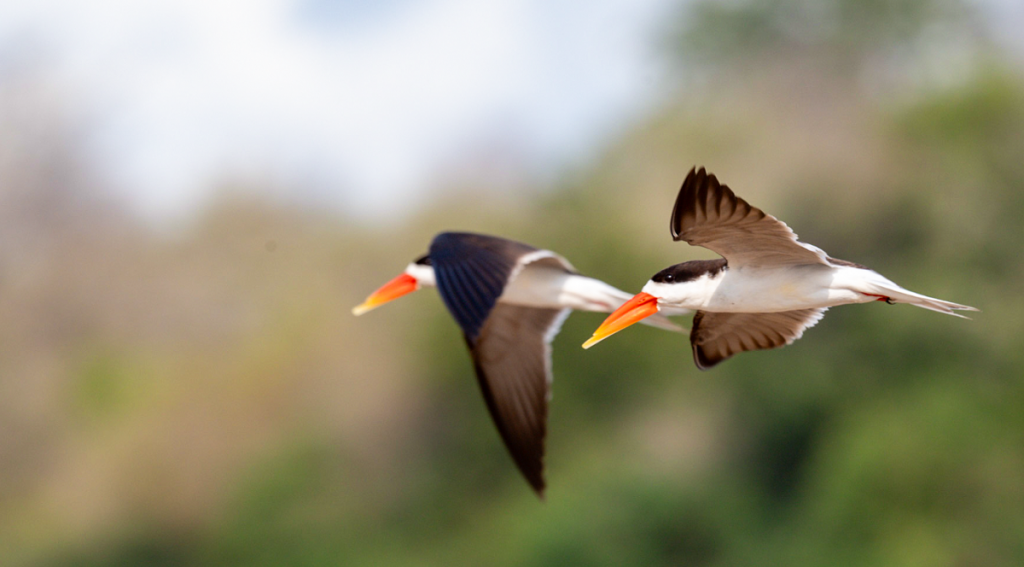Uganda: People, Primates And The ‘Old Africa’ Vibe
My one-word review of Uganda? Vivid. Just like it says in the dictionary: Intensely deep and bright and producing powerful feelings and strong, clear images. There’s nothing standard, neutral or monochrome about Uganda. It is larger than life, bursting with energy, color and vitality, with simply spectacular diversity on every level: the people, the countryside, the animals and birds and of course the primates.
On my Uganda trip in March this year, I was particularly blown away by the beautiful scenery, the chimpanzees (at both Kibale and Kyaninga), and – no surprise – the gorillas of Bwindi Impenetrable Forest. Most of all though, the friendliness and spontaneity of the people shone through, just like on my first visit, some ten years ago. Some things never change. Something that was different? The roads were much better – what a relief!
The ‘old Africa’ vibe
I was pleased to still experience the ‘old Africa’ vibe in Uganda on this trip, just like the first time. While change and progress are no doubt underway, Uganda still feels like Africa of 30 years ago. It is gracious and slower paced, with none of the frenetic feeling of some African safari destinations where game drives have taken on the tenor of a competitive sport.
In Uganda you can still expect to show up at a small coastal property only to find out that the gate is locked and the only person with a key is nowhere to be found. What to do? Nothing, really. Just cool your heels, get your binoculars and do a bit of birding while you wait. In Uganda, a situation like this is handled without rancor, without finger-pointing and without recrimination. Twenty minutes later, the key is located and you are welcomed to the property as if nothing had happened.
Uganda’s old Africa vibe extends into the most unlikely of places. On a hike to see the chimpanzees of Kyaninga Gorge, we came across what was the most rickety pedestrian bridge I have ever seen. The prospect of using it to cross a river was downright scary with big gaps between some cross-slats and others clearly not securely nailed down. The repairs should have been attended to months earlier. We asked about it, but never received a satisfactory reply. Apparently, even a relatively simple task that should take no more than a few hours – like that one – can turn into a bureaucratic marathon in Uganda. Particularly if the matter to be dealt with is inside a national park, in this case Queen Elizabeth National Park. In the Africa of old, nothing happens quickly when there is one or more government departments involved.
In the main and regardless of minor inconveniences like these, encountering the old Africa vibe is a good thing. It goes hand in hand with the country being largely undiscovered by hordes of travelers. In more than two weeks of traveling across Uganda and visiting several national parks, we could count the number of other tourist vehicles we observed on one hand. Admittedly, it was the low season but even in peak season, the visitor density remains extraordinarily low by any standard.
Stray even a little bit off the main routes in Uganda, and you slip into a world where foreign visitors become the focus of attention simply because of the novelty factor. American and other visitors are so rarely seen in many rural areas of Uganda that a passing ‘tourist vehicle’ – usually a Toyota Landcruiser – will bring smiling kids running down the hills and towards the road, waving wildly and exuberantly shouting words of welcome. “Msungu, Msungu!” No, it doesn’t exactly translate to ‘welcome’ but it’s close… While visiting a small village in Kidepo – Karamoja – in search of an authentic cultural experience, the tables were turned. It was us – the visitors from abroad – who turned out to be scrutinized more than anything else. I was worried about feeling awkward and being intrusive visiting their village and observing them, but as it turned out we were the ones on display.
Of course, we did learn more about the people and their lifestyle and it was altogether fascinating. A remote Uganda village like this one is as real as it gets. There is not an ounce of artifice or pretense. Entering one of the homes of the Karamoja families was a powerful experience for people like us, coming from such an unthinkably privileged background, in comparison with their reality. The home was a rough clay hut which contained a rudimentary kitchen (essentially a wood-burning fire pit), an in-home granary and a hand-cranked grinding mill for flour. The bedroom was little more than a patch of floor with a couple of roughly tanned cow-leather hides. The hut was claustrophobic and smoky to the point of distraction. Almost unimaginably basic for visitors who spend their days in air conditioned comfort and who complain about having 4G signal rather than 5G.
The chimps of Kibale and Kyaninga
So many places and experiences vie for the ‘best of the best’ award on a Uganda trip. I think for me, this time, it was undoubtedly the chimpanzees. On my first trip to Uganda some 10 years ago, I struggled mightily to see them well. In Kibale Forest we were literally running after them and they were mostly just dark blobs high up against the tree canopy. This time around? Totally the opposite. We could not have asked for better sightings of the chimps at Kibale and also – unexpectedly – at Kyaninga Gorge. I came away from this trip with literally dozens of good chimpanzee photographs. Any visitor – particularly one keen on photography – would have been thrilled with the experience. My advice? Spend 3 nights in the Kibale Forest area and do back to back chimp treks. At ‘just’ $200 the chimpanzee trekking permit is the best primate viewing deal going. And with two treks you’ll have a bit of insurance if one of the two outings don’t live up to expectations because of uncooperative chimps or bad weather.
The mountain gorillas of Bwindi Impenetrable Forest
A close second for ‘best of the best’ honors? The gorillas of Bwindi Impenetrable Forest. We trekked the Habinyanja family group in the Buhoma sector of the park, from Gorilla Forest Camp. I rated the hike as tough but doable by most people with good mobility and a degree of stamina. Certainly the effort was worth the results which were superb views – in a small clearing in broad daylight – of about 10 or so members of the family of just over 20 in total. Most extraordinarily, we were witnesses to the silverback gorilla mating with one of the female members of the troop. Right in front of us. I later spoke to Phil Ward, a long-time director of Uganda-based Classic Africa Safaris who said that he had never witnessed anything like this in the many dozens of gorilla treks which he’s been part of over the years in both Rwanda and Uganda. Special indeed.
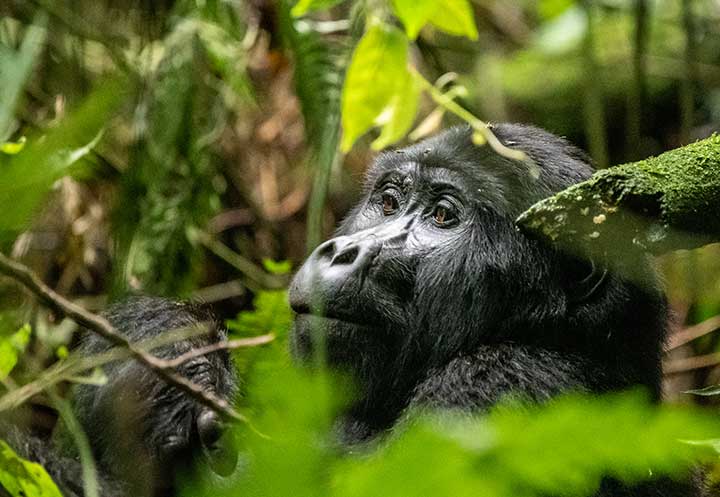
Hiking the Ivy Trail from Buhoma to Nkuringo
Another memorable activity was the 4-hour Ivy Trail hike within Bwindi impenetrable forest, from Buhoma to the southern Nkuringo sector. As I remarked to Classic Africa Safaris’ Lyndsay Harshman, who accompanied us for much of the trip, a walk through a gorgeous primary forest like this one, is a tonic for the soul. Although it was muddy – good boots essential – the first part of the trail was really more of a stroll through a beautiful forest than a serious hike. The environment was spectacular with giant trees shielding us from direct light, creating the typical interior forest gloom. The soft light with few shadows is perfect for photography. Towards the end of the hike the trail goes steadily uphill and at that altitude, in excess of 6,000 feet above sea level, you will be huffing and puffing, no doubt. But all good, as the next stop – for us – was the simply divine Cloud’s Lodge. Which has one of the most stupendous views of any property in Africa.
Outing to the top of Murchison Falls
Visiting the top of Murchison Falls is probably one of the most underrated experiences in Uganda. This was my second time seeing it, and it was no less impressive. Being this close to the fury of the entire Nile River exploding through a narrow gap in a rocky gorge is just flat-out amazing! I marveled at the fantastic power of nature in this raw and 100% unspoiled display of force and violence. It gets better and better as you get closer to the top – observing mountains of water crashing downwards with a thunderous roar is mesmerizing. One viewpoint is better than the next; there are some overlook points with superb views over the adjacent Uhuru Falls as well. I really rate this experience to be every bit as impressive as Victoria Falls. It is very different though as there is no huge curtain of water and the drop itself is not that high. However it is the proximity and the unbelievable force that practically shakes the rocks you are standing on, that does it for me. Emerging at the top, after a quick drenching from the spray at the Devil’s Cauldron overlook, we were greeted by a couple of rangers. There was almost nobody else around. No curio sellers, no soft-drink dispensers, just the powerful sound of the water behind and below you.
Boat ride to the Nile River Delta
I had previously done an outing on the Nile River following pretty much the same route which we did this time. I had forgotten just how fascinating and amazing an outing it was. This time around, we missed seeing a Shoebill Stork due to the water in the river being too high, displacing the Shoebill habitat which is essentially small islands of floating vegetation. Did it matter? Hardly. If you have a camera in your hand, a love of nature and particularly if you are keen to see some of Africa’s most spectacular birds, the two hours or so on the Nile River cruise fly by like minutes. It is hands down one of the best bird-watching experiences in East Africa with a stellar array of species to be seen, a highlight being the spectacular kingfishers. Sometimes one may see as many as four different kingfishers on the outing, including the Giant, Pied, Malachite and Grey-headed Kingfishers. There’s herons, egrets, lapwings, weavers, bee-eaters, jacanas – to mention but a few. Finding a majestic African Fish Eagle is very much on the cards here, maybe even an osprey. With a skilled skipper which we had on the boat operated by Wild Frontiers, we had multiple opportunities to get really close to most of the birds and you don’t have to have a telephoto lens to make some beautiful images.
Kidepo National Park
Kidepo National Park is a singularly beautiful part of Uganda, tucked into the far north-eastern corner of the country, in a hilly region where the borders of Uganda, South Sudan and Kenya intersect. Kidepo’s Narus Valley may very well be the prettiest place I’ve ever been to in Africa. Great big blue skies, craggy mountains and well-defined hills rolling towards the north. A vast open expanse of grassland with thorny acacias, sausage trees and others scattered all over, turn the Narus valley into a picture perfect African savannah. Seeking the grandeur of Africa? Look no further. This is it.
Even more so than elsewhere in Uganda, Kidepo is the Africa of old with few people and lots of animals, all essentially yours to find and admire in a landscape which could not be more striking. Every day, every outing unveiled more and better views. Noticeably, the concentration of wildlife was markedly higher in the Narus Valley than elsewhere in Kidepo. There were literally thousands of buffalo around, practically anywhere we drove – or walked. It was easy to see why. Located at the bottom of the valley, the Narus River annually floods much of the area and during the long dry season it is a lifeline for much of the wildlife of the area, being the only source of permanent water in the valley.
Unlike much of the Karamoja region which has sandy soils, the Narus valley soils are loamy and retain water well into the dry season, particularly in the extensive swamps and pools along the river. As a result, there is an abundance of wildlife to be seen. On our game drives in the area we were hardly ever out of sight of buffaloes, and a good variety of other plains game such as zebras, hartebeest, waterbuck, oribi and giraffes. We also enjoyed a few great sightings of the rare Pata’s monkeys, a primate adapted to life in a savannah environment.




